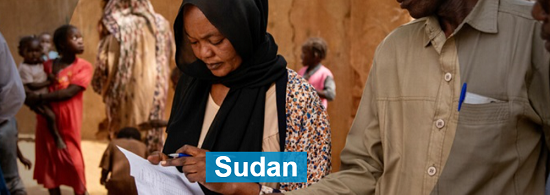Outbreak and Crisis Response Appeal 2023

People in need: 15.8 million
People targeted: 12.5 million
People in need of health assistance: 10.3 million
Requirements (US$): 43 million
Context
Humanitarian needs across Sudan are at record levels one year after a military coup. Protracted and new displacement induced by localized conflict, the rise in criminality and insecurity in parts of Darfur and other conflicts-affected areas, unprecedented spikes in acute food insecurity due to dry spells and erratic rains, high inflation for food, fuel and other commodities, floods and persistent disease outbreaks, have resulted in record numbers of people in need of humanitarian assistance.
Humanitarian partners estimate that about 15.8 million people – roughly 32% of the population – will be in need of humanitarian assistance in 2023. This is an increase of 1.5 million people compared to the previous year and is the highest since 2011. This also includes a 2 million increase in the number of food insecure people. Of the 15.8 million people in need, around 11 million require emergency assistance for life-threatening conditions related to critical physical and mental well-being and need life-sustaining support to meet minimum living standards.
Sudan also hosts over 1 million refugees, and is a source, transit and destination country for mixed movements of refugees, asylum-seekers and migrants across the sub-region towards Europe and other destinations.
The public health system is severely affected by years of underfunding, resulting in a lack of qualified health staff and insufficient access to basic and essential services. The disease surveillance system is fragmented, with only 2 168 out of 6 300 total health facilities (34.4%) representing Sentinel Surveillance and 70% of health facilities lacking essential lifesaving medicines. Sudan is the leading contributor to malaria in the Eastern Mediterranean Region, accounting for around 56% of cases, and is also endemic for the arboviruses chikungunya, dengue and yellow fever.





